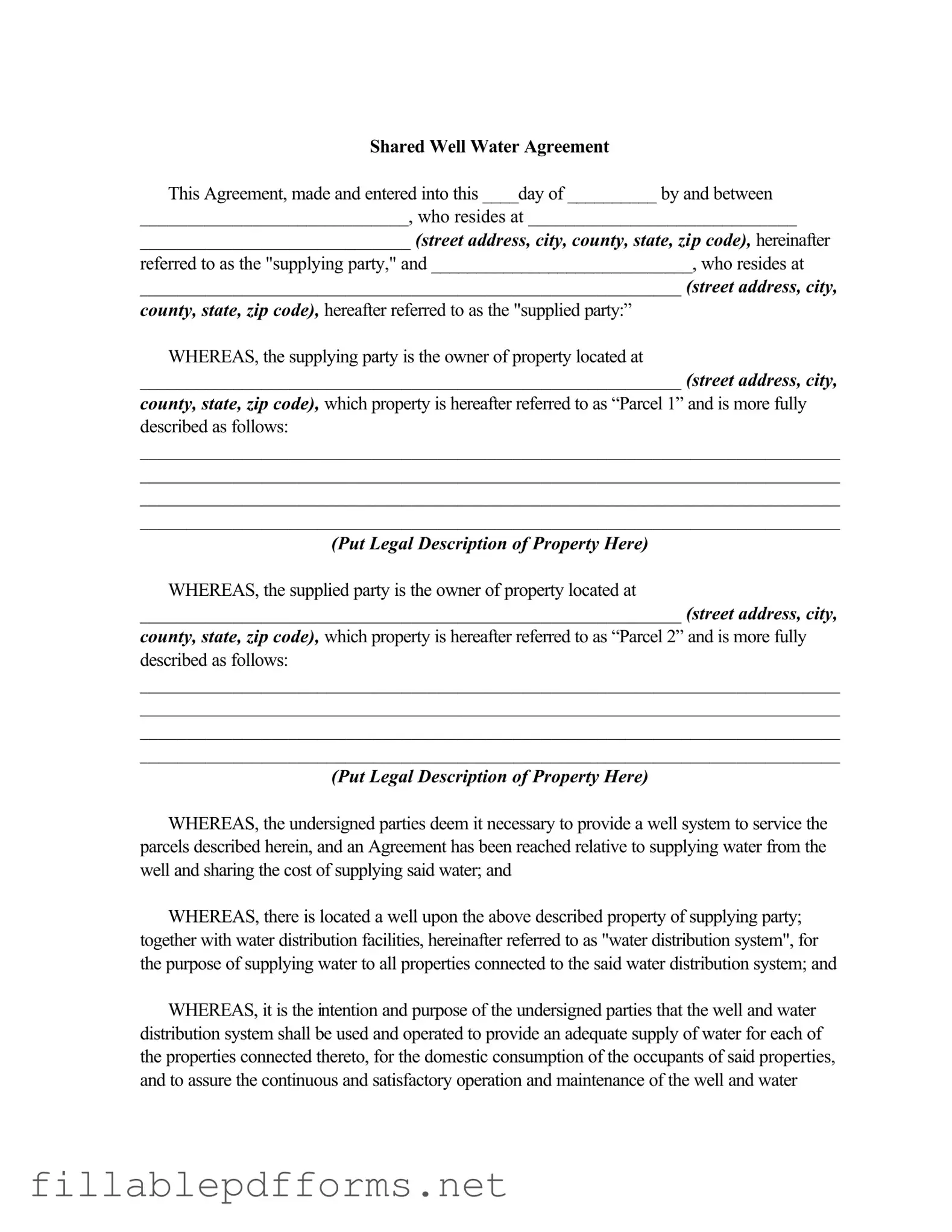The Shared Well Agreement form serves as a crucial document for property owners who rely on a communal water source. This agreement outlines the responsibilities and rights of the parties involved, specifically the supplying party and the supplied party. It details the ownership and legal descriptions of the properties known as Parcel 1 and Parcel 2, which are connected to a shared well system. The form establishes that the supplying party owns the well and associated water distribution system, and it emphasizes the necessity for both parties to cooperate in maintaining and operating this system. Key aspects include the annual fees for water usage, the sharing of maintenance costs, and the obligations of each party to ensure proper upkeep of their respective water pipes. Additionally, the agreement addresses emergency situations, easements for maintenance access, and conditions under which the agreement may be terminated. Furthermore, it stipulates that any disputes arising from the agreement will be resolved through binding arbitration, ensuring a structured approach to conflict resolution. This document not only protects the interests of the current owners but also extends its benefits to future owners, thereby creating a sustainable framework for shared water use.
